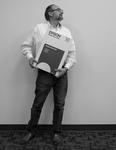Visible Mending
Abstract
References
Recommendations
The darklight rises: visible light communication in the dark: demo
MobiCom '16: Proceedings of the 22nd Annual International Conference on Mobile Computing and NetworkingVisible Light Communication (VLC) emerges as a new wireless communication technology with appealing benefits not present in radio communication. However, current VLC designs commonly require LED lights to emit perceptible light beams, which greatly ...
Using consumer LED light bulbs for low-cost visible light communication systems
VLCS '14: Proceedings of the 1st ACM MobiCom workshop on Visible light communication systemsLED-to-LED Visible Light Communication (VLC) based on Light Emitting Diodes (LEDs) and microcontrollers provide a foundation for networking using visible light as communication medium. We describe a low-complexity smart LED light bulb prototype that is ...
Applications of Visible Light Path Laser Projector
Proceedings of the Symposium on Human Interface 2009 on ConferenceUniversal Access in Human-Computer Interaction. Part I: Held as Part of HCI International 2009We proposed and developed a method to visualize the light path of a laser with jetting mists along light axis of a laser pointer. The estimation accuracy for the position of a laser spot occluded behind an object was improved when the light path of the ...
Comments
Information & Contributors
Information
Published In

Publisher
Association for Computing Machinery
New York, NY, United States
Publication History
Check for updates
Qualifiers
- Research-article
- Research
- Refereed limited
Conference
Acceptance Rates
Contributors
Other Metrics
Bibliometrics & Citations
Bibliometrics
Article Metrics
- 0Total Citations
- 119Total Downloads
- Downloads (Last 12 months)61
- Downloads (Last 6 weeks)5
Other Metrics
Citations
Cited By
View allView Options
Get Access
Login options
Check if you have access through your login credentials or your institution to get full access on this article.
Sign in
